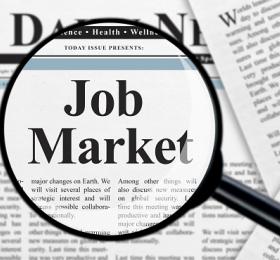
It’s deja vu all over again in laborland. April job gains matched those picked up in March. For the record, March’s original estimate was revised lower by 3,000 jobs according to this month’s report from the BLS, but 428,000 is still a strong number. Meanwhile, the official unemployment rate increased by 0.1% to 3.6% as the broader measure, U6, increased at a similar rate to 7%. Wage pressures continue to be a major theme in the US economy; hourly earnings for Americans increased 0.3% relative to March. Despite the broad gains in employment, the labor force actually shrank last month with participation falling to 62.2% from the prior month’s reading of 62.4%. We also would note that Q1 productivity took a serious hit (-7.5%) with labor costs surging by 11.6%. In fact, there have never been more US jobs available on record (March JOLT’s ~11.5M); it is certainly possible at this stage of the recovery that employers are simply finding it difficult to attract “would be” workers back to the office. The demand for labor is certainly there but financial conditions are tightening, small businesses are becoming skittish, and the consumer is in a rather dour mood. It’s all about real (inflation adjusted) earnings! Speaking of…
We are in the throes of yet another reporting season in corporate America. Though S&P 500 profits on an aggregate basis continue to chug along (possibly reaching double digit annual growth at the operating level by yearend), a unique dynamic is taking hold in the marketplace. Markets are heavily penalizing a handful of earnings disappointments, while marginally rewarding those companies generating earnings “beats.” We see this from time to time, but the magnitude of the disparity between positive and negative reactions is noteworthy. This has been the story of earnings so far in 2022. There is no question that American employers have been handed a very difficult environment in which to manage. Meanwhile, the Fed isn’t making matters easier. The FOMC raised short-term rates by 50 bps at Wednesday’s meeting. Further Jay Powell committed to winding down his $9T balance sheet beginning in June. The pace of asset sales from the Federal Reserve will vary, but we must also note that the US treasury has reduced its expected pace of debt issuance in recent days. So, Chairman Powell will be increasing the availability of treasuries in the marketplace just as Secretary Yellen reduces supply. As of today’s writing, the 10-yr UST is currently trading around 3.08% with mortgage rates climbing well above 5%.
In a surprising turn of events US GDP contracted in the first quarter… to the tune of 1.4%. The primary culprit was a surge in imports relative to exports (positive net exports increase GDP, while positive net imports reduce GDP). Having a direct impact on the balance between import and export activity is the US dollar. The greenback has surged nearly 8% on a trade weighted basis thus far in 2022 (we have maintained a preference for cash in our tactical models ytd). A strong dollar reduces the ability of US manufacturers to compete in the global marketplace, which can crimp profitability and reduce inflationary pressures (under ordinary circumstances). However, the US consumer buoyed domestic demand in Q1, and the outlook remains relatively strong for corporate earnings despite all of the uncertainty in the world today. As an aside, elevated levels of economic uncertainty and rising rates act in unison to compress valuation multiples for equities. While earnings growth has not faltered, uncertainty rules the day, which brings us to inflation.
Inflation has become less a passing domestic phenomenon and more a global conundrum. Certainly, the war in Ukraine has biased commodity prices higher across the spectrum, but prices were already elevated before the Russian invasion on February 24. Of course, there is a significant “fear premium” baked in at current levels, but there is also little reason to believe that the conflict in Europe will end anytime soon. After its initial assault was stopped in its tracks, Russia has recalibrated its approach and seems content to slowly squeeze Ukraine region by region. Mr. Putin seems to feel that time is on his side as long as his petrostate continues to crank out profits. Let’s not forget that there is an annual military parade in Moscow on the horizon-- more announcements from the Kremlin could be forthcoming. Ultimately, we will need to see a meaningful dialogue take place between Zelensky and Putin before there can be any optimism regarding a ceasefire or lasting peace in Ukraine. Next, we have the supply chain issues that have been a trouble spot since the dawn of the pandemic. Though we were beginning to see signs of modest improvement on this front, China locked itself down because of a spike in Covid-19 cases. One must wonder how realistic a Covid Zero policy really is. Regardless, the fact of the matter is that lockdowns reduce both supply and demand. So, in a world struggling to maintain growth and searching for reliable trade relationships, China remains very much a wild card in the grand scheme of global economics.
The mood in financial markets has changed markedly in 2022. The burden of proof is on governments and policymakers to demonstrate leadership and sound guidance as we navigate these unusual times. Corporate titans have demonstrated a knack for churning out record profits under rather difficult market conditions, but sustainability is an open question. Though double-digit earnings growth appears likely as the global economy continues to expand, we are walking a much finer line here as recessionary pressures increase and the window for quickly tightening monetary policy narrows.
Market Outlook: Neutral USD, Neutral Duration, Neutral Equities
News Release: Bureau of Labor Statistics (The Employment Situation- April 2022)